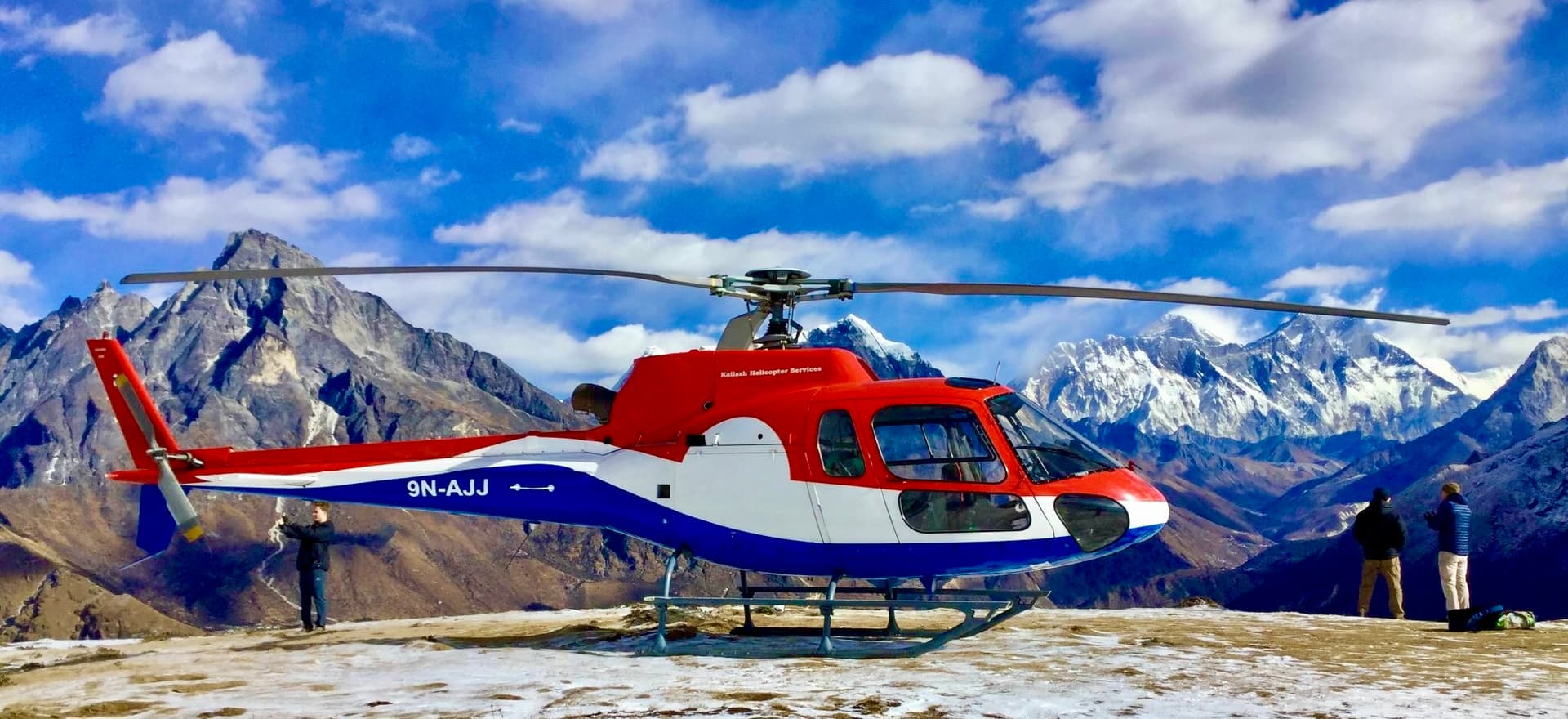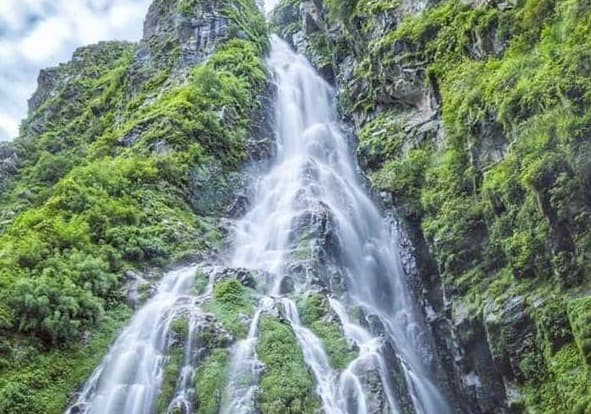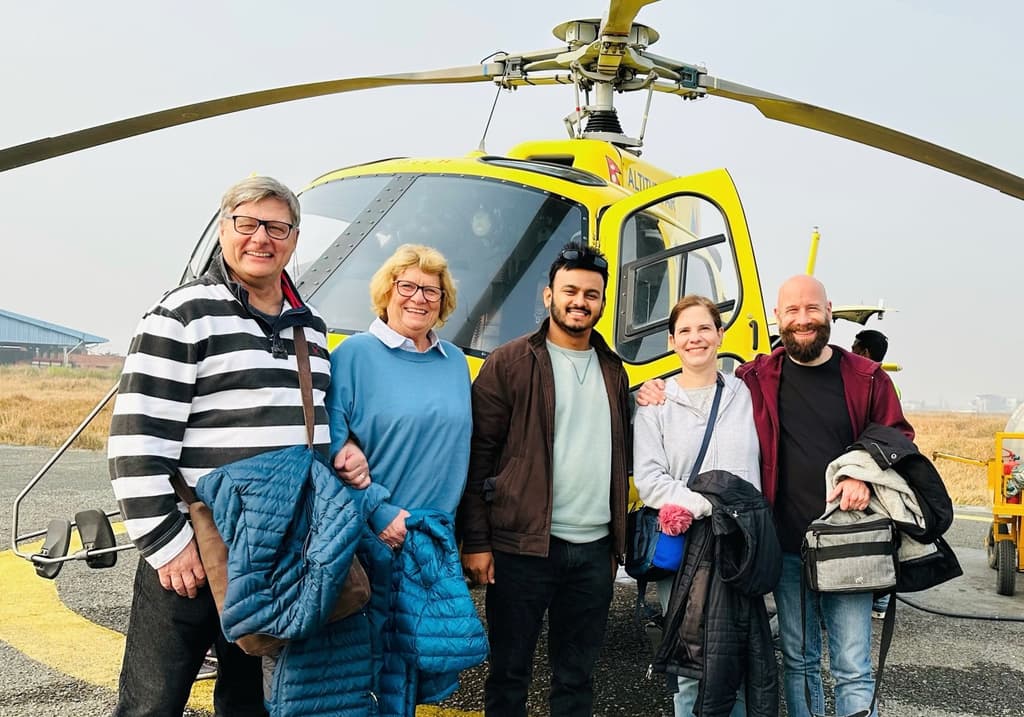The allure of Mount Everest, the world's tallest peak, has drawn adventurers and travelers from all corners of the globe. While many dream of conquering its heights on foot, there exists a luxurious and awe-inspiring alternative: a helicopter tour. When is the best time to embark on this aerial adventure? At Luxury Holidays Nepal Pvt. Ltd., we have meticulously crafted helicopter journeys over the years, garnering invaluable insights about the optimal months for this expedition.
The Himalayas, with their majestic peaks and dramatic landscapes, undergo distinct seasonal transformations. Each season, from the frigid embrace of winter to the verdant touch of spring, presents its own unique tapestry of experiences. Choosing the right month for your helicopter trip isn't just about clear skies; it's about deciding what facet of Everest's multifaceted beauty you wish to witness.
Having facilitated countless journeys to the summit's vicinity, Luxury Holidays Nepal Pvt. Ltd. is uniquely positioned to guide adventurers in making this decision. Our in-depth understanding of the region's climatic patterns, coupled with feedback from our esteemed clientele, has given us a comprehensive perspective on the matter.
We will delve deep into each month's offerings, providing you with a detailed month-by-month breakdown. Our goal is to ensure that when you board that helicopter, you're not just embarking on a trip, but a meticulously curated experience tailored to your preferences.
Spring (March to May)
Spring at Mount Everest is a vibrant interplay of blooming flora and favorable climatic conditions, making it one of the most sought-after seasons for explorers and adventurers. As the region emerges from its wintry blanket, the mountains become a canvas of contrasting hues. Luxury Holidays Nepal Pvt. Ltd. captures the essence of the spring months, providing valuable insights for those aiming for a helicopter journey or trek to the world's highest peak.
Attributes of Spring
-
Weather: Spring ushers in a mild warmth after the cold winter months. Early spring, particularly March, might still experience the residual cold, but by May, the region enjoys relatively warmer days.
-
Visibility: March often boasts of blue, clear skies, providing sweeping panoramic views. However, as spring progresses into late April and May, occasional haziness might appear, but the overall vistas remain stunning.
-
Flora & Fauna: The season breathes life into the local ecology. Rhododendrons, known as the ‘Queens of the Himalayas’, bloom in a riot of colors, from fiery reds to calming whites. Additionally, the increase in avian activity makes it a paradise for bird enthusiasts.
Month-by-Month Overview
March
March is an ideal month for an Everest Helicopter Tour, falling within Nepal's spring season that spans from March to May. This period boasts stable weather and clear skies in the Everest region, ensuring outstanding visibility and unimpeded views of the majestic mountain ranges and picturesque landscapes.
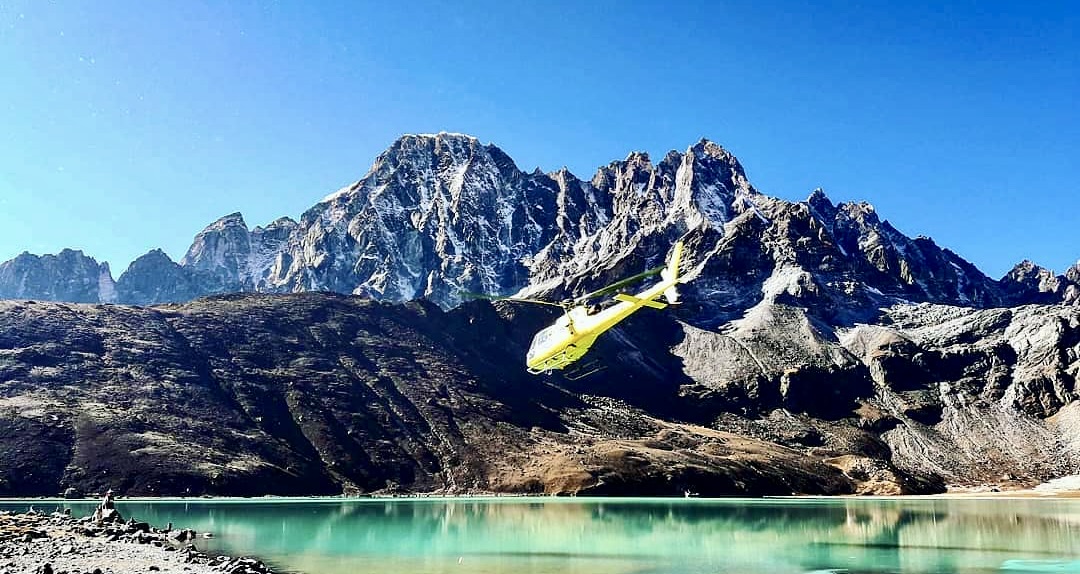
- Temperature: Daytime temperatures can vary between 10°C to 15°C at lower altitudes and between -6°C to 5°C at higher elevations. Nights are cooler, often dipping to near freezing in lower regions and colder at elevated areas.
- Experience: Being the outset of spring, March presents a blend of lingering winter chills and the onset of warmth, with progressively clearer skies and less snow.
April
April, situated in the heart of Nepal's spring season that stretches from March to May, presents a prime opportunity for an Everest Helicopter Tour. The Everest region during this month typically enjoys stable weather conditions and crystalline skies, offering optimal visibility and magnificent, unblocked views of the breathtaking mountain terrains and scenic landscapes.
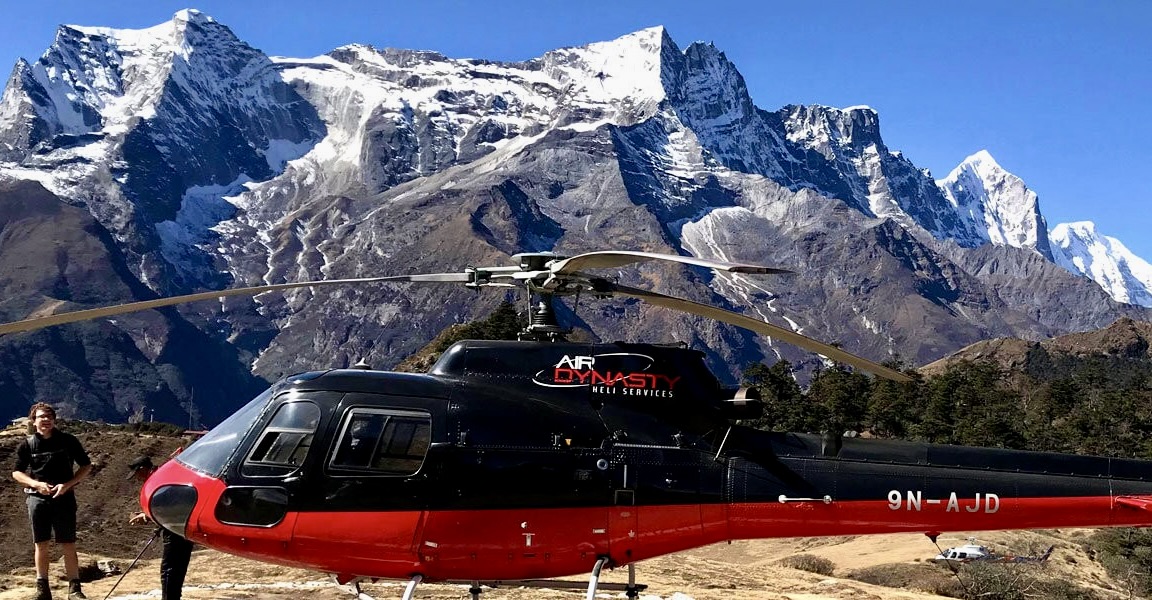
- Temperature: Daytime warmth can reach 15°C to 20°C at lower altitudes, while higher zones experience a range of -3°C to 8°C. Nights, while milder than March, are still chilly.
- Experience: April is characterized by a surge in both temperatures and floral blossoms. The mountaineering spirit is palpable, with base camps bustling in anticipation of summit bids.
May
May, marking the culmination of Nepal's spring season that spans from March to May, remains a favorable period for an Everest Helicopter Tour. The Everest region during this month typically benefits from consistent weather patterns and pristine skies, ensuring prime visibility and allowing travelers to relish uninterrupted vistas of the awe-inspiring mountainous landscapes.
- Temperature: May witnesses temperatures ranging from 16°C to 22°C in the lower regions during the day, and between 0°C to 10°C in the upper reaches. Nights are relatively warmer, yet still demand layered clothing.
- Experience: Being the zenith of the spring season, May offers stability in weather, making it a favored time for mountaineering expeditions and helicopter tours.
Spring at Mount Everest is a harmonious blend of nature's beauty and adventure. Whether you're marveling at the blooming rhododendrons or soaking in the majestic views of the Himalayas, this season guarantees memories that last a lifetime. With Luxury Holidays Nepal Pvt. Ltd. guiding your steps or flights, you're assured of an unparalleled springtime Everest experience.
Autumn (September to November)
Autumn at Mount Everest is often described as a golden period, where nature paints the landscape in brilliant hues of gold, orange, and red. As the monsoons retreat, the skies clear up, offering unparalleled views of the majestic mountains. At Luxury Holidays Nepal Pvt. Ltd., we have a rich history of guiding adventurers through this splendid season. In this article, we walk you through the intricacies of the autumn months, highlighting the temperatures and experiences that make this season truly unique.
Characteristics of Autumn
-
Weather: Autumn brings with it a gradual drop in temperatures as the region prepares for the incoming winter. The transition from the warm monsoon months to the colder winter is both evident and palpable.
-
Visibility: The monsoon clouds make way for some of the clearest skies of the year. The pristine atmosphere presents the Himalayan range in all its glory, with sharp, defined views of the peaks.
-
Flora & Foliage: The forests, especially at lower altitudes, burst into a riot of colors. Trees shed their green cloaks, revealing brilliant shades of gold, orange, and crimson.
Month-by-Month Insights
September
September offers a viable window for an Everest Helicopter Tour, though one should remain cognizant of possible weather interferences. As the inaugural month of Nepal's autumn season, stretching from September to November, the Everest region predominantly experiences a stable climate, characterized by cloudless skies and agreeable temperatures.
- Temperature: Daytime temperatures at lower altitudes range from 15°C to 20°C, while at higher altitudes, it can range between 2°C and 8°C. Nights are cooler, with temperatures dropping to 5°C at lower regions and as low as -5°C at elevated zones.
- Experience: Early September might see remnants of the monsoon, but as the month progresses, the weather becomes clearer and drier.
October
October stands out as a prime month for an Everest Helicopter Tour, nestled within Nepal's autumn season that extends from September to November. In this period, the Everest region enjoys a predominantly steady climate, complemented by azure skies and pleasant temperatures.

- Temperature: Day temperatures hover between 12°C to 16°C at lower regions and 0°C to 5°C at higher zones. Nighttime sees a sharper drop, with temperatures ranging between 2°C to 8°C in lower areas and -8°C to -4°C in elevated regions.
- Experience: Widely regarded as the best month to visit Everest, October offers impeccable visibility and stable weather, making it popular among trekkers and flyers alike.
November
November, signaling the close of Nepal's autumn season that spans from September to November, presents an optimal window for an Everest Helicopter Tour. Within this stretch, the Everest region typically boasts a consistent climate, marked by translucent skies and temperate conditions.
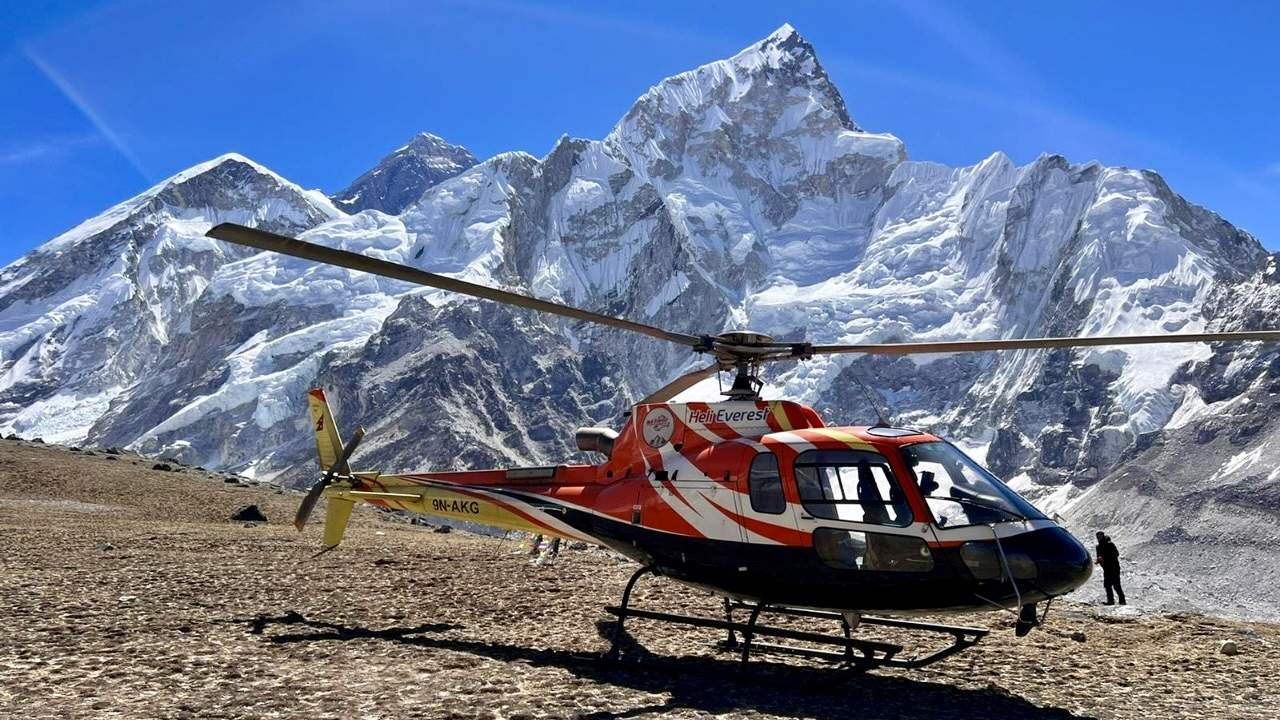
- Temperature: As winter approaches, November witnesses a further dip. Day temperatures range from 10°C to 14°C at lower altitudes and -4°C to 2°C at higher elevations. Night temperatures can drop to 0°C in lower regions and plunge to -10°C in the higher zones.
- Experience: The decreasing temperatures signal the onset of winter, but the clear skies and reduced crowd make it a serene time to visit.
Autumn at Mount Everest is a celebration of nature. The clear skies, vibrant foliage, and crisp air combine to offer an unparalleled experience. Embark on this autumnal journey with Luxury Holidays Nepal Pvt. Ltd. and be part of a mesmerizing Himalayan tale.
Winter (December to February)
Winter at Mount Everest unveils a starkly beautiful face of the Himalayas. A season of tranquility, contrasted by the raw might of the mountains under a blanket of pristine snow. While many perceive winter as a challenging period, it can also be a time of serene landscapes and fewer crowds. In this guide by Luxury Holidays Nepal Pvt. Ltd., we shed light on the nuances of the winter months at Everest, offering insights for those intrepid souls looking to experience this majestic peak in its harshest, yet arguably most beautiful, season.
Winter’s Mystique
-
Weather: Winter witnesses plummeting temperatures, with the colder spells especially pronounced at higher altitudes. The region is characterized by crisp air, often accompanied by snowfall, especially in December and January.
-
Visibility: Despite the cold, the winter skies over the Himalayas are often clear, offering unparalleled vistas of the snow-clad peaks. The clarity of the atmosphere makes for some of the most breathtaking panoramas.
-
Flora & Fauna: While much of the vegetation lies dormant, winter can still surprise with its hardy wildlife. Sightings of snow leopards and Himalayan tahrs, against a backdrop of snow, are moments to cherish.
Month-by-Month Breakdown
December
December offers an opportunity for an Everest Helicopter Tour, though one should be mindful of the chillier conditions and possible snowfall. Situated in Nepal's winter season, which spans December through February, this month presents a distinctly cool ambiance in the Everest region.
- Temperature: In December, daytime temperatures at lower altitudes range between 5°C to 10°C, while at higher elevations, it can drop between -15°C and -5°C. Nights are bitterly cold, often plummeting well below freezing.
- Experience: Early December still carries the remnants of autumn's charm, but as the month progresses, the winter chill sets in, paving the way for fresh snowfall and crystalline landscapes.
January
January, nestled within Nepal's winter season that extends from December to February, can pose hurdles for those seeking an Everest Helicopter Tour, primarily because of the brisk conditions and likelihood of snowfall in the Everest region.

- Temperature: January is the coldest month, with daytime temperatures hovering around 2°C to 7°C in lower regions and plummeting to between -20°C and -10°C at elevated zones. Nighttime temperatures can be extremely harsh.
- Experience: With the peak of winter, January offers solitude and vast snowy expanses. The feeling of being amidst the silent, snow-covered giants is surreal.
February
February, part of Nepal's winter season that stretches from December to February, might present obstacles for enthusiasts of the Everest Helicopter Tour, given the region's pronounced cold and the possible onset of snow in the Everest vicinity.
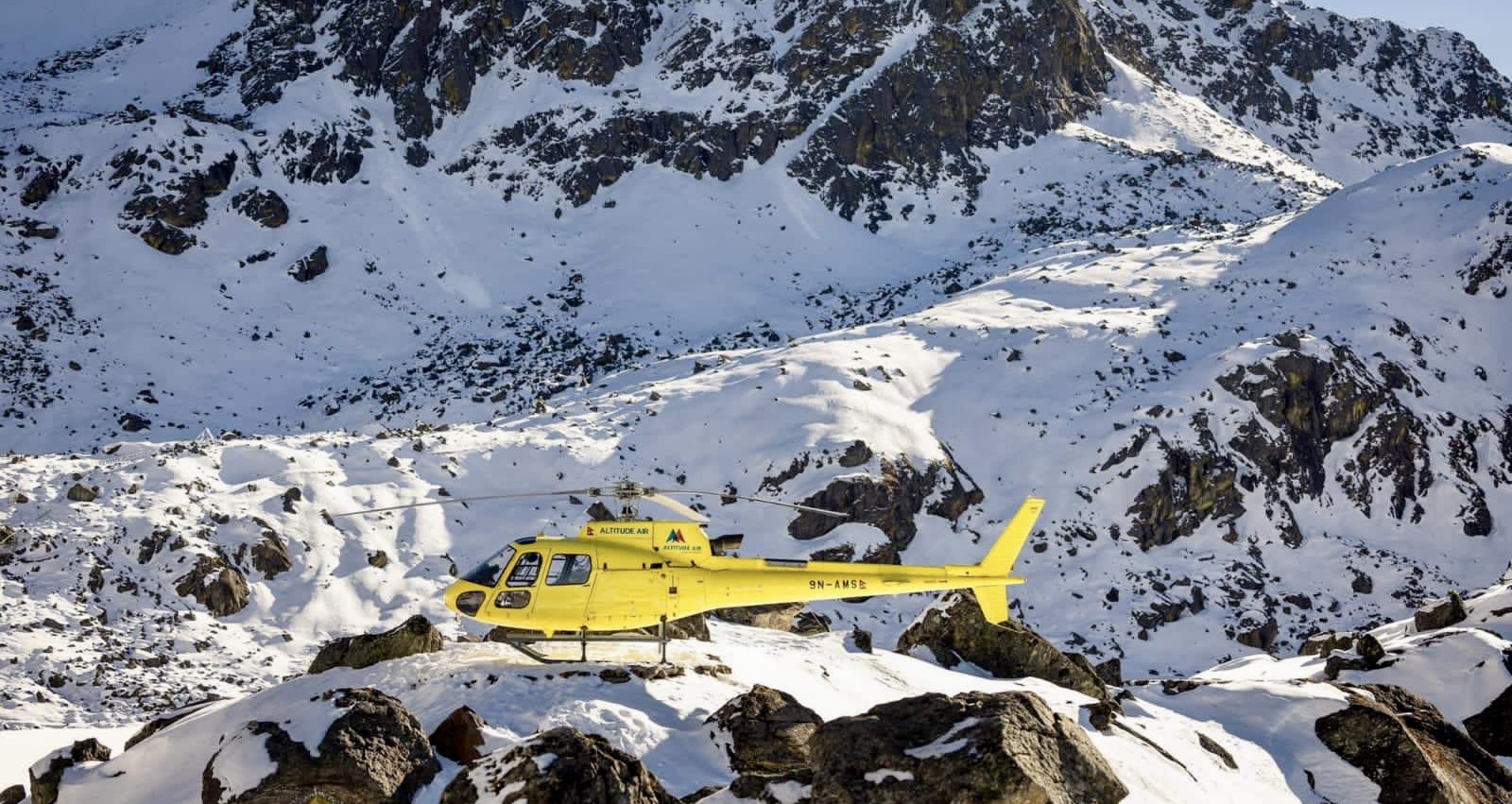
- Temperature: As winter starts receding, February sees temperatures ranging from 4°C to 9°C during the day at lower altitudes, and between -17°C and -7°C at higher reaches. Nights, while cold, are slightly milder than January.
- Experience: Late February hints at the approaching spring, with slightly warmer days. However, the remnants of winter's touch are still very much evident.
Winter at Mount Everest is not just a season; it's an experience, a spectacle of nature's raw power and beauty. With Luxury Holidays Nepal Pvt. Ltd. by your side, be ready to embark on a winter journey that promises awe, adventure, and memories to last a lifetime.
Summer/Monsoon (June to August)
The summer season, accompanied by the monsoons, paints a distinct picture of Mount Everest and its surroundings. A time when the region is enveloped in vibrant greenery, cascading waterfalls, and a symphony of life awakened by the rains. While the monsoon months may present challenges, they also offer a unique perspective of the Himalayas. Luxury Holidays Nepal Pvt. Ltd. presents this comprehensive guide on the summer/monsoon months, providing essential insights for those curious about experiencing Everest during this season.
The Monsoon Magic
-
Weather: The summer/monsoon season brings warmth, humidity, and frequent rainfall. The months from June to August are characterized by heavy downpours, typically during the afternoons and evenings.
-
Visibility: The moisture-laden atmosphere can lead to cloudy conditions, obscuring the mountain views on some days. However, after a fresh spell of rain, the skies might clear up momentarily, revealing the peaks in all their grandeur.
-
Flora & Fauna: This season witnesses a surge in the biodiversity of the region. The valleys and hills burst into various shades of green, and the wildflowers bloom in full swing. The rhythm of the monsoon also attracts a plethora of bird species, making it a delight for ornithologists.
Month-by-Month Breakdown
June
June presents a distinctive backdrop for those considering an Everest Helicopter Tour, as it signifies the onset of the monsoon season in Nepal. June is the commencement of the summer monsoon period, which typically spans from June to August. This month can be characterized by increased rainfall, warmer temperatures, and occasionally clouded vistas in the Everest region. While the lush and vibrant landscape is a sight to behold, potential travelers should be prepared for unpredictable weather conditions and be flexible with their itineraries.
- Temperature: June sees temperatures varying between 15°C to 20°C in the lower areas during the day, and between 5°C and 10°C in the upper terrains. Nights are milder compared to the winter and spring months.
- Experience: As the onset of the monsoon, June experiences increased rainfall. The landscapes begin their transformation, and the region starts donning its green attire.
July
July, situated right in the heart of Nepal's summer monsoon season, offers a unique ambiance for an Everest Helicopter Tour. Stretching predominantly from June to August, the monsoon during July is usually at its peak. This results in frequent downpours, warmer temperatures, and often cloud-covered views in the Everest region. The rejuvenated green landscapes and cascading waterfalls are truly mesmerizing, but those planning a tour should be well-prepared for erratic weather patterns and might need to adapt their schedules accordingly.
- Temperature: Daytime warmth hovers around 16°C to 22°C in the lower regions and 6°C to 12°C in the higher zones. Nights are pleasantly cool, perfect for restful sleep.
- Experience: July sits right in the heart of the monsoon. The rains are more frequent, and the environment is saturated with life. Rivers and streams flow with renewed vigor.
August
August, marking the tail end of Nepal's summer monsoon season, provides a distinct experience for those contemplating an Everest Helicopter Tour. As the monsoon season wanes, spanning mainly from June to August, August experiences a gradual decline in rainfall. The Everest region during this month can be a blend of sporadic rain showers, warmer temperatures, and occasional clear moments that unveil the majestic peaks. The landscapes, lush from previous rains, showcase a vibrant hue, making it a visual treat. Prospective travelers should remain equipped for varied weather conditions and be flexible in their travel plans.
- Temperature: August witnesses temperatures ranging from 17°C to 23°C at lower altitudes and 7°C to 13°C at elevated regions. The nights remain consistently cool.
- Experience: As the concluding month of the monsoon, August carries with it the anticipation of the approaching autumn. The rains start to wane towards the end of the month.
The summer/monsoon season at Mount Everest offers a different, lush perspective of the Himalayas. It's a testament to nature's adaptability and the resilience of life in this high-altitude paradise. Embarking on this monsoonal journey with Luxury Holidays Nepal Pvt. Ltd. promises an immersive experience, rich with verdant landscapes and the rhythms of the rains.
Important Notes on the Mount Everest by Helicopter Tour
Taking a helicopter tour of Mount Everest is undeniably one of the most thrilling and memorable experiences one can have. To ensure that your journey is not only spectacular but also safe and hassle-free, Luxury Holidays Nepal Pvt. Ltd. offers the following essential notes:
Optimal Flight Time: Mornings are usually the best time for helicopter tours. The air is calmer, and the visibility tends to be clearer. Flights usually take off early to capitalize on these optimal conditions.
Duration: A typical helicopter tour to the Everest Base Camp and back takes approximately 4 to 5 hours, including brief stops at specific viewpoints like Kalapathar.
Weight Restrictions: Helicopters have strict weight limitations. Depending on the model of the helicopter, only a limited number of passengers can be accommodated. Always be aware of personal baggage limits.
Altitude Sickness: Altitude sickness can affect anyone, regardless of age or fitness level. While the helicopter tour is relatively quick, the stops at high altitudes can trigger symptoms. It's recommended to be informed about the signs of altitude sickness and discuss with the tour operator any personal concerns.
Oxygen Availability: Most helicopters are equipped with oxygen for emergencies. Given the high altitudes at which the tour operates, it's comforting to know that oxygen support is at hand should anyone require it.
Weather Dependence: Mountain weather is notoriously unpredictable. Sometimes, flights might be delayed or rescheduled due to weather conditions. It's essential to have a flexible schedule and trust the expertise of the pilot and the Luxury Holidays Nepal Pvt. Ltd. team.
Clothing: Even in warmer months, it can be quite cold at higher altitudes. Dress in layers, and don't forget your sunglasses, sunscreen, and a hat. The sun can be particularly intense in the mountains.
Booking in Advance: Due to the popularity of helicopter tours, it's advisable to book well in advance, especially during peak tourist seasons.
Safety Briefings: Before embarking on the tour, our team will provide a comprehensive safety briefing. Pay close attention to the instructions for your safety and the safety of others.
Eco-responsibility: The Everest region is a delicate ecosystem. Even on a helicopter tour, it's essential to be mindful of the environment. Follow the leave-no-trace principles, even if you're only stopping for a short while.
Embarking on a helicopter tour of Mount Everest is an adventure of a lifetime. With the majestic Himalayas unfolding before your eyes, it's an experience that will be etched in your memory forever. By keeping these essential notes in mind, and with the expertise of Luxury Holidays Nepal Pvt. Ltd., you're set for a journey that's as seamless as it is spectacular.
The ideal time to experience a helicopter tour of Mount Everest largely hinges on individual preferences and the type of experience sought. Spring (March to May) is universally lauded as the best season due to its stable weather, clear skies, and the vivid blossoms that blanket the landscape. During this period, the temperatures are moderate, and the visibility is excellent, providing unparalleled views of Everest and its neighboring peaks. This is also the peak climbing season, offering a chance to witness climbers' base camps bustling with activity.
On the other hand, Autumn (September to November) presents itself as a close second, marked by crisp air and a fresh palette of colors post-monsoon. The skies are azure, and the mountains stand out sharply against them. While the temperatures are a bit cooler compared to spring, the vistas are just as magnificent, with fewer tourists around. Both these seasons offer a splendid amalgamation of favorable weather, visual delights, and the sheer grandeur of the Himalayas, making them prime choices for a helicopter journey to the world's tallest peak with Luxury Holidays Nepal Pvt. Ltd..
If you need any further information, please contact us, Email: at [email protected], Phone: +977- 985 100 5129 (WhatsApp)

